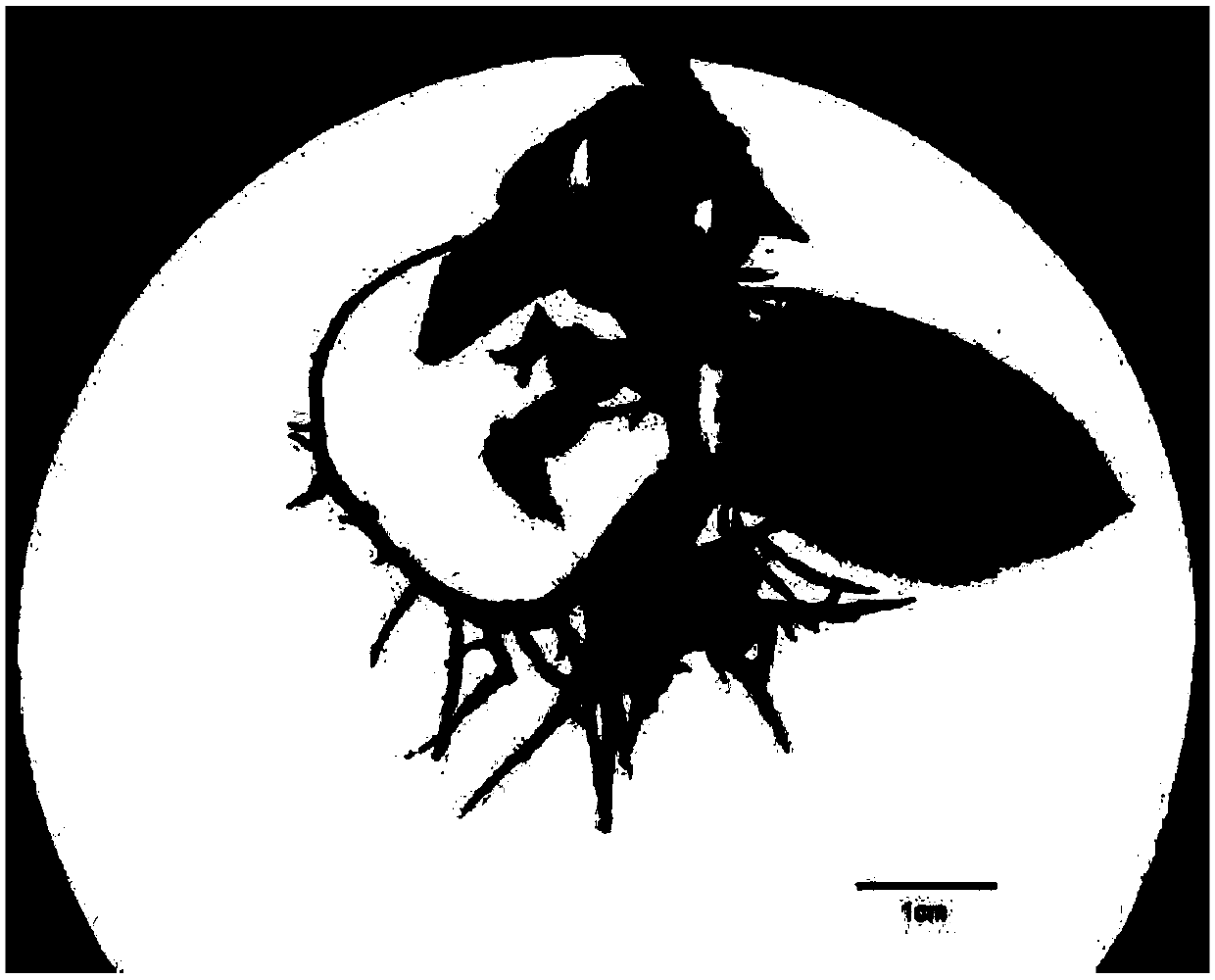Tissue culture method of malus hupehensis
A tissue culture and begonia technology, applied in horticultural methods, botanical equipment and methods, horticulture, etc., can solve the problems of individual differences in sowing and seedling raising, low reproductive efficiency, etc., and achieve easy operation, high transplanting survival rate, and shortening of the breeding cycle. Effect
- Summary
- Abstract
- Description
- Claims
- Application Information
AI Technical Summary
Problems solved by technology
Method used
Image
Examples
Embodiment 1
[0023] A method for tissue culture of Hubei crabapple, comprising the following steps:
[0024] S 1 1. Disinfection treatment of explants: at the beginning of March, select robust annual Hubei crabapple seedling semi-lignified single-bud stem sections as explants, first soak them in washing powder solution for 30 minutes, and use a soft brush to scrub the surface dirt, and then After rinsing with running water for 2 hours, place it in an ultra-clean workbench, and use HgCl with a mass concentration of 0.1% 2 The solution was sterilized for 7 minutes, and then rinsed with sterile water for 5 times. After rinsing, the part of the stem in contact with the medicinal solution was cut off, and cut into 1-2 cm stems on sterile filter paper;
[0025] S 2 , primary culture: the step S 1 The treated 1-2cm stem segments were inoculated on the induction medium for primary culture until the axillary buds of the explants germinated, the germination rate was 90.0%, and they grew into 2-3c...
Embodiment 2
[0030] A method for tissue culture of Hubei crabapple, comprising the following steps:
[0031] S 1 1. Disinfection treatment of explants: at the beginning of March, select robust annual Hubei crabapple seedling semi-lignified single-bud stem sections as explants, first soak them in washing powder solution for 30 minutes, and use a soft brush to scrub the surface dirt, and then After rinsing with running water for 2 hours, place it in an ultra-clean workbench, and use HgCl with a mass concentration of 0.1% 2 The solution was sterilized for 7 minutes, and then rinsed with sterile water for 5 times. After rinsing, the part of the stem in contact with the medicinal solution was cut off, and cut into 1-2 cm stems on sterile filter paper;
[0032] S 2 , primary culture: the step S 1 The treated 1-2cm stem segments were inoculated on the induction medium for primary culture until the axillary buds of the explants germinated, the germination rate was 66.7%, and they grew into 2-3c...
Embodiment 3
[0037] A method for tissue culture of Hubei crabapple, comprising the following steps:
[0038] S 1 1. Disinfection treatment of explants: at the beginning of March, select robust annual Hubei crabapple seedling semi-lignified single-bud stem sections as explants, first soak them in washing powder solution for 30 minutes, and use a soft brush to scrub the surface dirt, and then After rinsing with running water for 2 hours, place it in an ultra-clean workbench, and use HgCl with a mass concentration of 0.1% 2 The solution was sterilized for 7 minutes, and then rinsed with sterile water for 5 times. After rinsing, the part of the stem in contact with the medicinal solution was cut off, and cut into 1-2 cm stems on sterile filter paper;
[0039] S 2 , primary culture: the step S 1 The treated 1-2cm stem segments were inoculated on the induction medium for primary culture until the axillary buds of the explants germinated, the germination rate was 80.0%, and they grew into 2-3c...
PUM
 Login to View More
Login to View More Abstract
Description
Claims
Application Information
 Login to View More
Login to View More - R&D
- Intellectual Property
- Life Sciences
- Materials
- Tech Scout
- Unparalleled Data Quality
- Higher Quality Content
- 60% Fewer Hallucinations
Browse by: Latest US Patents, China's latest patents, Technical Efficacy Thesaurus, Application Domain, Technology Topic, Popular Technical Reports.
© 2025 PatSnap. All rights reserved.Legal|Privacy policy|Modern Slavery Act Transparency Statement|Sitemap|About US| Contact US: help@patsnap.com


